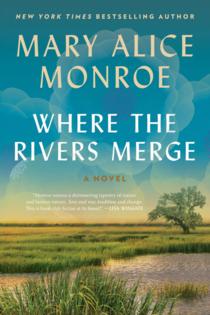Mary Alice Monroe explores love, sacrifice and grit in sweeping Southern epic
Published in Mom's Advice
Mary Alice Monroe’s latest novel, "Where the Rivers Merge," is a gorgeous read, one of those historical novels that sweeps you up into a time and a place so real and lush you feel you’re there, with a compelling storyline to make you stay.
This captivating multigenerational saga of a wealthy South Carolina family and its land centers on a feisty protagonist who pushes the bounds of social etiquette and primogeniture, grasping every opportunity she can to ride her horse as fast as the wind takes her and to protect the land she loves.
The story’s protagonist is Eliza Rivers, born in 1900 — middle child and only daughter — to an ill-matched couple: a wealthy socialite mother and a struggling South Carolina farmer with generational ties to the immense estate of Mayfield.
Fast-forward to 1988, when the book opens, and Eliza runs the family’s multi-million-dollar corporation connected to that land. She is in Charleston to celebrate her 88th birthday amongst stockholders, a mix of family and friends. With an eye to her legacy, she has placed one thousand acres of Mayfield into a conservation easement to protect it from development.
Mayfield’s environmental richness — set in the ACE Basin of southeastern South Carolina, where the Ashepoo, Combahee and Edisto rivers converge — would likely disappear forever with its sale. Eliza will fight that with all she has. In response, her money-hungry son Arthur has opposed the easement and now strives to force his mother into immediate retirement.
Rebuffing Arthur, Eliza skips her birthday celebration and flees to Mayfield, accompanied by her 18-year-old granddaughter, Savannah, whom Eliza has barely gotten to know, and 40-year-old Norah Wilton Davis, a grandniece Eliza has never met who is now employed at the Nature Conservancy. Norah is the granddaughter of Eliza’s long-deceased brother and Covey Wilton, a Black woman who was Eliza’s dearest childhood friend.
Over coffee, Eliza uses the mural on the dining room wall — where family activities have been depicted in paint over the last century — to launch into telling her story to these young women for the first time. Over several days, she recounts her early childhood years in Mayfield and Charleston, the family’s highly personal experience of World War One, and a wedding.
Eliza starts off with how she meets Norah’s grandmother, Covey, in 1908 when both girls are 8 years old. Norah’s single dad is the manager of Mayfield, and he and Covey live near the main house.
Eliza had run away from home, and as the entire town searches for her, it is the savvy Covey who finds her sleeping in a tree hollow. The girls become kindred souls. Covey’s “eyes were a wonder,” Eliza says, remembering when she first sees her. “Orbs of green, gold and gray were locked inside a dark perimeter, drawing you in. It was like looking into the woods on a sunny day.”
Having grown up white and privileged, the young Eliza has only the barest sense of the racial prejudice that has constricted Covey’s life since birth. Eliza’s slow-growing social awareness brings conflict and tension as the girls transition from the farm to life in Charleston, where Jim Crow laws are more tightly observed.
As part of her coming of age, Eliza works to balance her desire to help her father manage the farm and tend her beloved horse with her mother’s pressure for her to engage in the domestic arts and find a husband.
Eliza’s North Star throughout her life has been her profound love of nature. It is a common theme in Monroe’s writing: reverence for our vulnerable land and preservation of its legacy.
A true strength of this novel is its deep sense of place, fostered in no small part by the detailed blurb that introduces each chapter, describing some aspect of South Carolina’s flora, fauna and social life. We learn of the resurrection fern, with its “ability to resurrect itself in periods of drought from withered brown fronds to lush green within hours.” The description of the American bullfrog makes you want to sit by a pond in South Carolina just to wait for one to emerge with its “very deep call, which resembles the mooing of a cow.”
Monroe also offers geographic and historic tidbits, such as a pithy summary of the post-Civil War Jim Crow laws that legalized racial segregation as an attempt to keep the Black population at near-slave status.
"Where the Rivers Merge" is book one of a two-book series. It is also the first historical novel of the nearly 30 books Monroe has penned. This may be her finest work to date, even for those who have loved the previous works of this best-selling author. Book two cannot come soon enough.










Comments